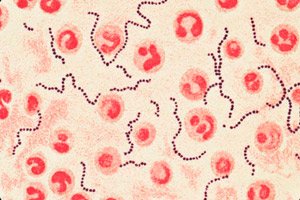
All iLive content is medically reviewed or fact checked to ensure as much factual accuracy as possible.
We have strict sourcing guidelines and only link to reputable media sites, academic research institutions and, whenever possible, medically peer reviewed studies. Note that the numbers in parentheses ([1], [2], etc.) are clickable links to these studies.
If you feel that any of our content is inaccurate, out-of-date, or otherwise questionable, please select it and press Ctrl + Enter.
Japanese strain of streptococcus turns out to be more dangerous due to gene mutation
Last reviewed: 03.08.2025

A team of researchers led by Osaka University has identified a new genetic mutation in Streptococcus pyogenes, a common bacterium that causes strep throat, that is significantly associated with severe invasive infections.
A single mutation in an iron ion transporter impairs bacterial growth in human blood. This mutation, unique to Japanese isolates, indicates a new pathogenicity mechanism. This discovery, a world first, represents a potential new target for treatment and prevention.
S. pyogenes causes severe invasive infections with high mortality. In Japan, there was a sharp increase in cases of invasive streptococcus in 2024, highlighting the urgent need for new treatments and a better understanding of the mechanisms underlying the disease.
A new study looked at the genes of hundreds of S. pyogenes samples from Japan and other countries to identify genetic differences that make some strains more dangerous.
The research team conducted a comprehensive genomic analysis of 666 S. pyogenes strains — 311 from Japan and 355 from other countries — using advanced pan-genome association analysis techniques. The study is published in the journal eLife.
Scientists have discovered a number of genetic changes linked to the bacteria's ability to cause severe infections, including a completely new mutation that has not been described before. This mutation affects a gene involved in how the bacteria absorb iron, a nutrient it needs to survive.
Interestingly, they also found that many genes previously thought to cause serious disease are actually common in less dangerous strains. This suggests that some strains may become more dangerous not just by acquiring harmful genes, but also by losing genes that curb pathogenicity.
This study provides significant advances in our understanding of severe invasive streptococci, particularly in the Japanese population.
"This large-scale analysis, involving painstaking supercomputer work and experimental validation, opens up a promising avenue for new therapies targeting the mutated iron transporter," explained Dr. Masayuki Ono, lead author of the study.
The pan-genome approach used in the study also demonstrates the potential of large-scale genomic analysis to unravel complex disease mechanisms, providing a powerful tool for future research into other infectious diseases.
